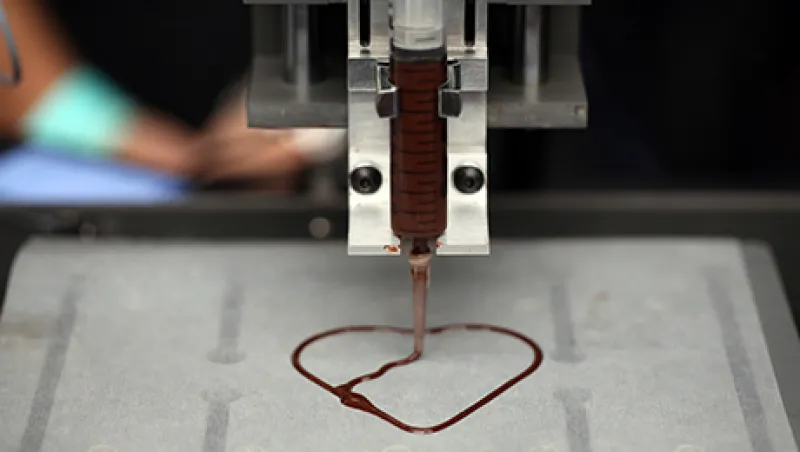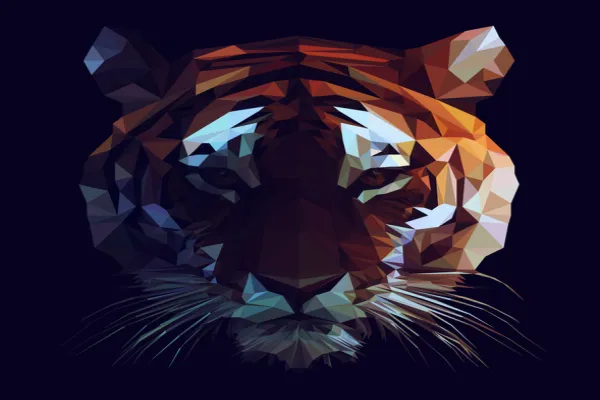Why are objects special? Is it because of what we can do with them, or is it because we need them to think? 2001: A Space Odyssey suggests that humankind began with tool use: A furry pre-Neanderthal hominid takes up a bone from a dead animal — maybe a tapir, since there are a bizarre number of tapirs in the movie’s opening scene — and uses it to defend himself. There’s no mistaking the importance of the moment: The thunderous chords of Strauss’s Also Sprach Zarathustra make matters particularly clear. From this grand, primary moment, all it takes is a little evolution for humans to eventually create a powerful sentient computer (albeit a mutinous one) and fly to the edges of the universe.
What sorts of tools are we making now, and are those tools perhaps changing our brains as much as Stanley Kubrick’s movie might suggest? The tapir bone first serves the hominid as a weapon, but it is also, and more important — once danger has passed — a tool for learning. New advances in 3-D printing might produce more objects and in new places, on demand. But they remain exciting to consider beyond this more obvious application because, as one Wired article put it, they might be best used as “thinking tools” — not smart tools, or tools that think, but tools for thinking, ones that make us smarter.
It’s not that we don’t know this. Object-oriented learning takes place mostly in museums, where curators often run programs to let visitors and children handle less valuable or less breakable specimens, from ancient urns to scale models of molecules. Engaging all of the senses rapidly increases our interest in a given topic; it becomes more real to us. One of the most promising things about 3-D printing is that it allows us to interact meaningfully with objects we had to imagine before — a cognitively taxing task. Screens can grant us access to anything in its visual form. 3-D printing lets us examine objects with our hands, a distinctly if not definitionally human activity, freeing up time and sparing us boredom while we learn.
Initially, the focus will be on medical applications: One surgeon prints 3-D models of the brains on which he’ll have to operate and uses them to rehearse the removal of complicated tumors, even keeping a model nearby during surgery, according to Wired. The story also cites a San Diego father who prints objects to help his blind daughter learn mathematical concepts using touch. So it seems possible, as 3-D printing grows to what is estimated to be $18 billion in 2018, that learning tools will be among its applications, along with medicine and parts manufacturing, which would appear to be its two most common uses. Already Eden Prairie, Minnesota–based Stratasys — a leader among U.S. 3-D printing companies — targets schools and universities.
It’s also true that embodied activities are more fun and keep us engaged. Elementary school teachers would likely agree that a student would enjoy printing a 3-D model of the solar system more than copying down the names of all the planets. That means anywhere people will need to be trained — not just in schools but in businesses of all kinds — a 3-D printer might be found.
And speaking of fun, other developments to watch for include 3-D scanners, which are coming, somewhat predictably, out of the gaming industry. Microsoft’s Kinect system lets Xbox gamers control their systems using hand gestures and was, according to the New York Times, its fastest-selling device of all time. The technology behind the system performs real-time — or almost real-time — 3-D object reconstruction, letting the Xbox see and interact with its users’ bodies. It can also be used to create a 3-D mesh of any object that can be converted with relatively simple software into 3-D-printable plans. It seems very likely that affordable 3-D scanners will soon be in many consumers’ homes and built into next-generation smart devices. (3D Systems already sells one for about $400.) One could imagine a world in which almost anyone could take a picture of a product with their iPhone and replicate it at home or at Staples, which now offers 3-D printing alongside its document services.
These developments might change not only how we think but also what we think we’re allowed to think about. Passive consumers become what are already called makers. So investors working at a slightly higher level might also look into marketplaces that allow 3-D printing fans to buy and sell their own products. New York–based start-up Shapeways does precisely that. What might it mean for a wide swath of the population to know how to design — or at least be able to design — its own small objects? Any company that mass produces cheap plastic goods as its primary revenue stream is going to get hurt. If 3-D printing takes significant hold, Lego Group may be out of luck.
But whatever ends up happening, we should be alert as we buy, build and invest in technologies like 3-D printing — and virtual reality (VR) and the Internet of Things — to their potential to make us smarter. But there’s something else I should mention. I didn’t specify at the beginning of this column that the tool-using humanoid of 2001 receives his inspiration not from the animal bone but from a giant gray obelisk installed by aliens in front of the clan of humanoids’ cave. But maybe aliens 3-D printed the obelisk? Stanley Kubrick remains silent on the matter.
Follow Daniel Nadler on Twitter at @danielnadler.
Get more on trading and technology.






